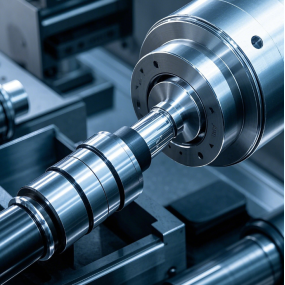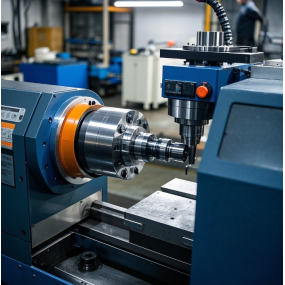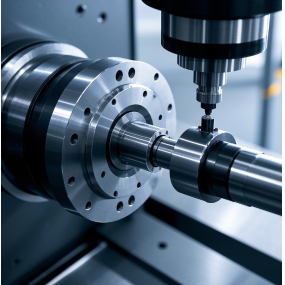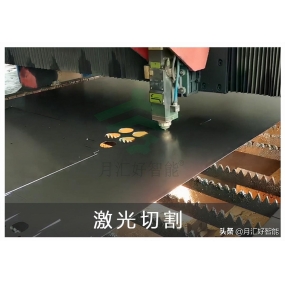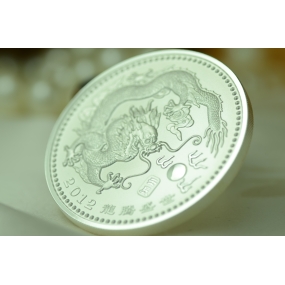In the production process of precision hardware fittings, the control of smelting temperature is crucial, it directly affects the quality and performance of the product. The following are a few suggestions on how to control the smelting temperature: ① Clear the melting point of metals: Different metals have different melting points, which is the basis for smelting temperature control. It is necessary to clarify the melting point of the metal material used and ensure that the smelting temperature is higher than its melting point to ensure that the metal can be completely melted.  ② Select the appropriate smelting equipment and process parameters: Select the appropriate smelting equipment and process parameters according to the type and properties of the metal. For example, some metals may require higher melting temperatures, while some equipment may be more suitable for processing specific metals. ③ Use good temperature control equipment: Use good temperature control equipment, such as temperature sensors and controllers, can monitor and adjust smelting temperature in real time. These equipment can ensure the accuracy and stability of smelting temperature and reduce the impact of temperature fluctuations on product quality. ④ Control smelting speed and cooling speed: Smelting speed too fast may lead to uneven temperature, while cooling speed too fast may lead to stress inside the product. Therefore, it is necessary to control smelting speed and cooling speed reasonably to ensure the quality and performance of the product. ⑤ Regular inspection and maintenance of smelting equipment: The normal operation of smelting equipment is essential for the control of smelting temperature. Regular inspection and maintenance of smelting equipment is required to ensure that it is in good working condition. For example, check whether the heating element, temperature sensor, etc. are working properly, and replace the damaged parts in time. ④ Pay attention to the chemical reactions during the smelting process: During the smelting process, the metal may oxidize with the oxygen in the air, or chemically react with the flux. These reactions may affect the purity and quality of the metal. Therefore, it is necessary to control the chemical reaction conditions during the smelting process, such as adding an appropriate amount of flux to cover the metal surface to prevent oxidation and suction. 0006 Refer to the temperature range of the specific metal: For different metals, the range of smelting temperature may vary. For example, the suitable temperature range for die-casting zinc alloy is 400 ℃~ 420 ℃, the suitable temperature range for die-casting aluminum alloy is 640 ℃~ 700 ℃, and the suitable temperature range for die-casting magnesium alloy is 670 ℃~ 740 ℃. When controlling the melting temperature, it is necessary to refer to these specific temperature ranges and adjust them according to the actual situation.
② Select the appropriate smelting equipment and process parameters: Select the appropriate smelting equipment and process parameters according to the type and properties of the metal. For example, some metals may require higher melting temperatures, while some equipment may be more suitable for processing specific metals. ③ Use good temperature control equipment: Use good temperature control equipment, such as temperature sensors and controllers, can monitor and adjust smelting temperature in real time. These equipment can ensure the accuracy and stability of smelting temperature and reduce the impact of temperature fluctuations on product quality. ④ Control smelting speed and cooling speed: Smelting speed too fast may lead to uneven temperature, while cooling speed too fast may lead to stress inside the product. Therefore, it is necessary to control smelting speed and cooling speed reasonably to ensure the quality and performance of the product. ⑤ Regular inspection and maintenance of smelting equipment: The normal operation of smelting equipment is essential for the control of smelting temperature. Regular inspection and maintenance of smelting equipment is required to ensure that it is in good working condition. For example, check whether the heating element, temperature sensor, etc. are working properly, and replace the damaged parts in time. ④ Pay attention to the chemical reactions during the smelting process: During the smelting process, the metal may oxidize with the oxygen in the air, or chemically react with the flux. These reactions may affect the purity and quality of the metal. Therefore, it is necessary to control the chemical reaction conditions during the smelting process, such as adding an appropriate amount of flux to cover the metal surface to prevent oxidation and suction. 0006 Refer to the temperature range of the specific metal: For different metals, the range of smelting temperature may vary. For example, the suitable temperature range for die-casting zinc alloy is 400 ℃~ 420 ℃, the suitable temperature range for die-casting aluminum alloy is 640 ℃~ 700 ℃, and the suitable temperature range for die-casting magnesium alloy is 670 ℃~ 740 ℃. When controlling the melting temperature, it is necessary to refer to these specific temperature ranges and adjust them according to the actual situation.
Hello! Welcome to EMAR's website!
 English
English » »
» »
 Spanish
Spanish Arabic
Arabic Spanish Basque
Spanish Basque Portuguese
Portuguese Belarusian
Belarusian Japanese
Japanese Russian
Russian Icelandic
Icelandic Bulgarian
Bulgarian Azerbaijani
Azerbaijani Estonian
Estonian Irish
Irish Polish
Polish Persian
Persian Boolean
Boolean Danish
Danish German
German French
French Filipino
Filipino Finnish
Finnish Korean
Korean Dutch
Dutch Galician
Galician Catalan
Catalan Czech
Czech Croatian
Croatian Latin
Latin Latvian
Latvian Romanian
Romanian Maltese
Maltese Malay
Malay Macedonian
Macedonian Norwegian
Norwegian Swedish
Swedish Serbian
Serbian Slovak
Slovak Slovenian
Slovenian Swahili
Swahili Thai
Thai Turkish
Turkish Welsh
Welsh Urdu
Urdu Ukrainian
Ukrainian Greek
Greek Hungarian
Hungarian Italian
Italian Yiddish
Yiddish Indonesian
Indonesian Vietnamese
Vietnamese 简体中文
简体中文 Haitian Creole
Haitian Creole


